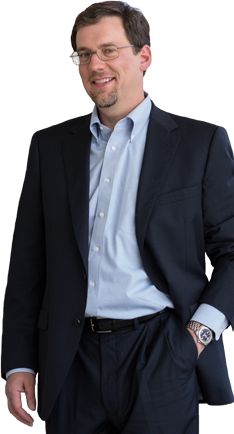
 |
This past summer, I had the (bucket list!) opportunity to play golf with four NFL quarterbacks, including Drew Brees (New Orleans) and Carson Palmer (Arizona), and their backups Chase Daniel and Drew Stanton.
I was designated as a cart driver, and my number one objective was to not tip over and injure a player. Beyond that, I was fascinated to hear these leaders' inside perspectives. Yes, they are athletes, but they are leaders with enormous influence on their teams' direction and future.
Drew Brees is a Super Bowl MVP, and he holds about as many collegiate and NFL awards and records as it takes me shots to get through a golf game (a lot). But he is hardwired to give others (staff, receivers, offensive line, et al.) credit for all that goes well, and take responsibility when things don't go as hoped.
That's what Jim Collins refers to as "level 5" leadership.
I hope you enjoy this issue.
Warm Regards,

Brad Cleveland
|

Please enable pictures on your device for full story
For several years, I facilitated workshops for a financial services company. The training occurred annually, over the course of a week, for new managers. This gave me a view into the organization that was like time lapse photography. The VP of customer service in the early years was charismatic, with big personality. The organization produced good results, and he was highly regarded as an effective leader.
But when he left for another opportunity, the organization struggled. Eventually, a new VP of customer service found her footing. She had a quiet, very understated leadership style, but I could see strength in the organization began to return. She, too, eventually moved to a different position, but the organization's successes continued.
 |
| Brad Cleveland with Drew Brees |
The first VP was an effective leader. He set clear goals, created an engaged environment and enabled the team to achieve high levels of performance. But when he left, the organization began to decline. It felt rudderless.
Professor Jim Collins and his team of researchers for the book Good to Great (which is now 17 years old, and has certainly stood the test of time) identified what they call "level 5 leadership." The greatest leaders are those who build an organization (or team, or department) that continues to thrive after they are gone.

Collins's framework provides insight into the progression of leaders:
- Level 1 is a capable individual, who contributes talent, knowledge, skills and good work habits.
- Level 2 is a contributing team member who works well with others to produce results.
- Level 3 is a competent manager who can organize employees and resources, to attain results.
- Level 4 is an effective leader who catalyzes commitment to a vision and rallies support to achieve high levels of performance.
- Level 5 is the leader who possesses the combination of humility and a ferocious will for the organization to be remarkable. Their focus is on leaving the organization stronger and ensuring that it can sustain success.
Here are some of the ways you can build an organization (team/department) that continues to thrive:
- One is to hire capable people. As Collins and his team put it, "Great vision without great people is irrelevant."
- Another is to practice humility. Collins and his team refer to the mirror and window to differentiate behavior between level 4 and level 5 leaders. Level 5 leaders look out of the window to credit others for success and look in the mirror to take responsibility when things don't go as planned. Charismatic leaders who haven't reached level 5 tend to do just the opposite: they look through the window to find factors for lack of success and look in the mirror to take credit when things go well.
- Strive to see things as your customers do. A consultant I know tells of a recent domestic flight where he was sitting in one of the 12 seats in first class. Another passenger was getting a lot of attention, great service, and he learned it was the airline's CEO who wanted to personally check in on how the airline's service was going. My friend, never shy, leaned over and introduced himself and suggested to the CEO that he might want to move to the cabin where most of his customers were sitting. Seeing things as your customers do enables you to make changes to processes, policies and services that have staying power.
- Build strong systems and processes. The enduring successes of companies such as Amazon, Apple and Disney are due in no small part to the systems and processes they put in place. Technology changes rapidly. But an intense focus on keeping things simple for customers has helped guide the investments these organizations make in systems and processes.
Collins observed, "Greatness is not a matter of circumstance—it is a matter of choice and discipline." I agree, and I find it encouraging and inspiring. What's the strength you're building in your organization? What's the legacy you will leave?
Recent Issues
|

70 percent of Fortune 500 companies that existed in 1990 were gone by 2015.
4 in 10 employees strongly agree someone at work cares about them. (Gallup)
50 percent of employees know what is clearly expected of them at work every day. (Gallup)
Top Leadership Competencies
67%: has high ethical and moral standards
59%: Provides goals and objectives with loose guidelines/direction
56%: Clearly communicates expectations
(Source: survey of 195 global leaders by Sunnie Giles. See complete list.)
|

Think through and honestly answer these questions:
- Of the five levels Jim Collins defines�how would you rate your leadership?
- How would others rate your leadership? (Suggestion: ask a few colleagues for candid input.)
- What are the improvement opportunities?
Put together an action plan and put a tickler in your calendar to do this self-reflection at least yearly.
|

New online courses available through LinkedIn: Customer Service Leadership, Customer Advocacy, Customer Service Metrics
Brad recently presented at TEDxSunValley, on "Thriving in an Always-On World"
Kickoff, Customer Service Track, Business Practices and Emerging Technologies Conference (University of Wisconsin), September 14, Madison, WI.
Keynote, ICMI Demo Conference, Las Vegas, September 25-27, 2017
Public workshop opportunity with Brad: Orlando, November 13-16, 2017; courses include contact center strategy and management.
*Brad delivers private keynotes, workshops, and executive briefings to organizations and associations. For more information, contact info@bradcleveland.com.
|

|
Brad has devoted his career to maximizing the value of customer-facing services. As a speaker, consultant, entrepreneur, executive, and president/CEO, he has seen change from many perspectives and has a deep understanding of the critical importance of customer service delivery to an organization's success. He has worked across 45 states and in 60 countries, and has been privileged to assist in the evolution of service delivery for clients such as American Express, Apple, Coca-Cola, USAA, and others, as well as for governments across the globe. Brad serves as a senior advisor to the International Customer Management Institute (ICMI), and is an in-demand speaker and consultant.
To inquire about consulting or speaking, connect through any of the channels below.
|
 |

© 2017 Brad Cleveland All Rights Reserved
|
|
|




